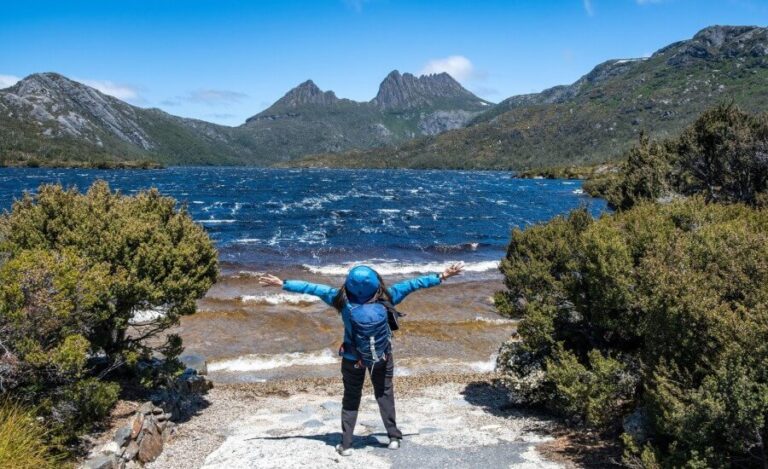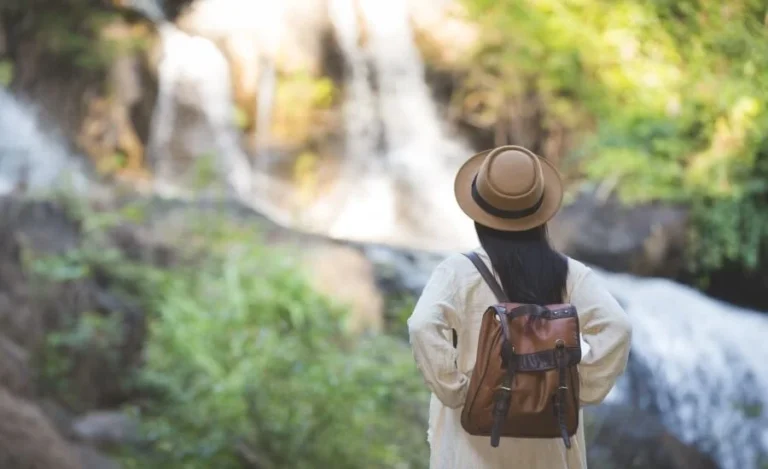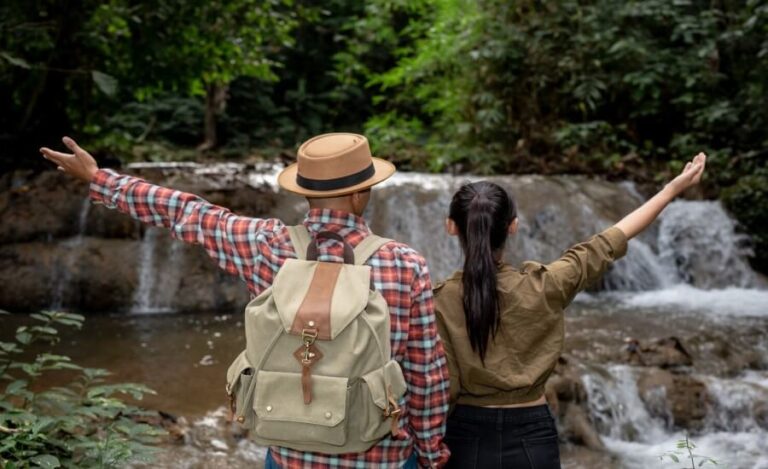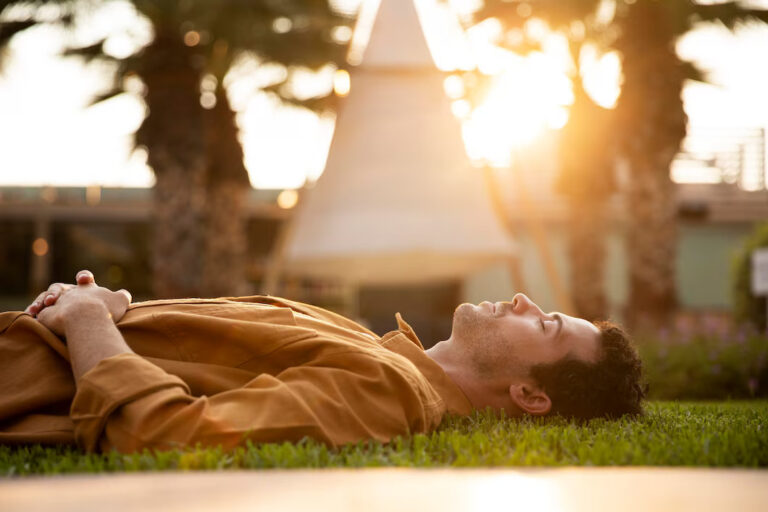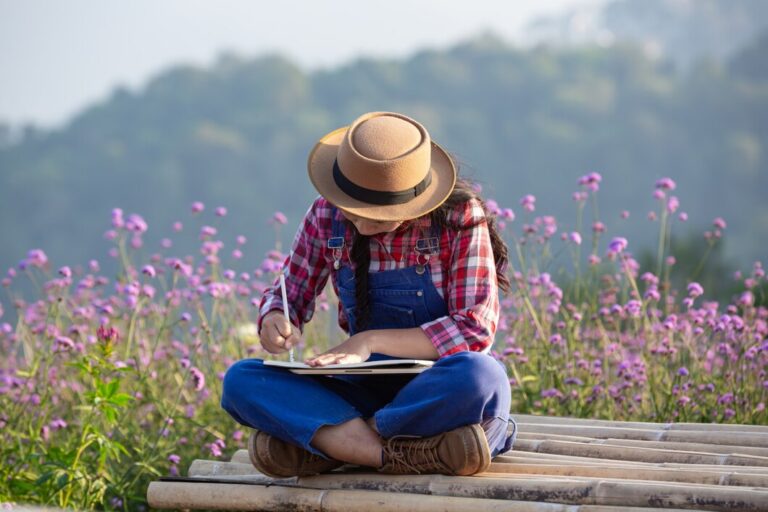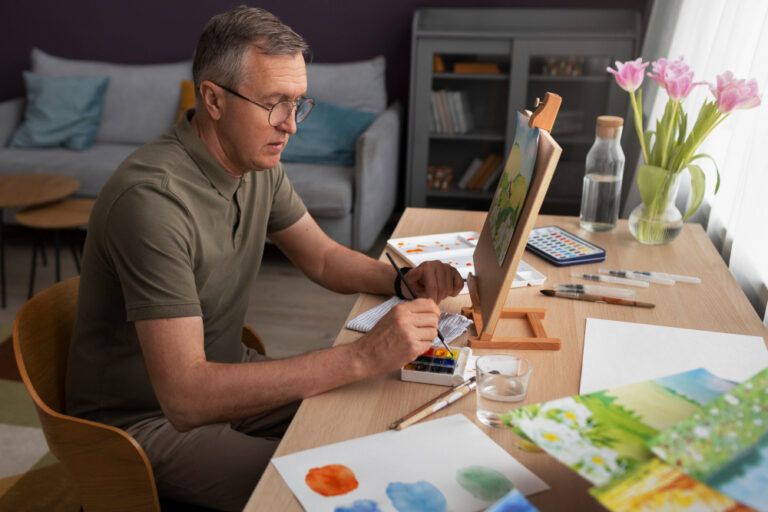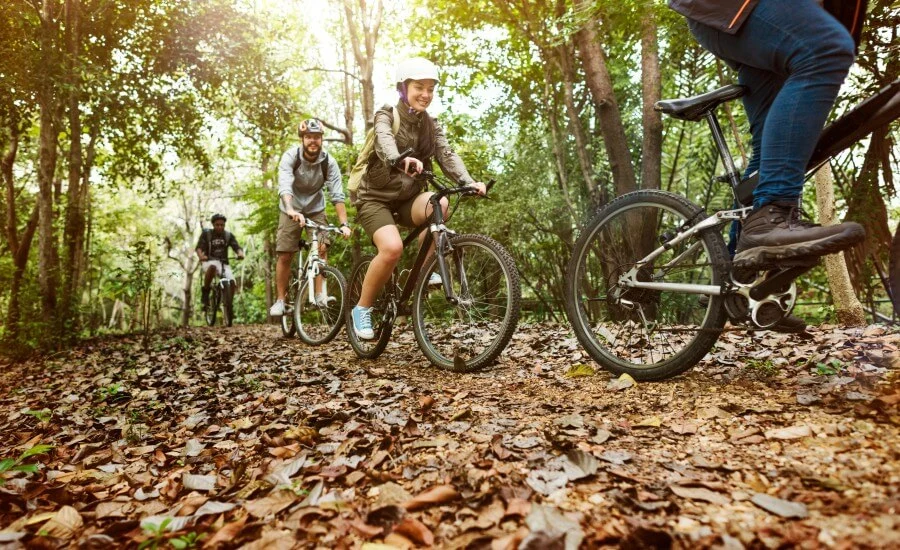
Imagine Asia. Perhaps you picture ancient temples glimpsed through a speeding bus window, bustling markets experienced in a whirlwind tour group, or stunning landscapes flashing by from a plane seat. Now, imagine a different Asia. One where you feel the texture of the road beneath your tires, smell the tantalizing aroma of street food sizzling nearby, hear the cheerful greetings of children as you pedal slowly through their village, and witness daily life unfold at a human pace. This is the Asia revealed through the magic of two wheels.
Cycling in Asia offers an unparalleled opportunity for authentic travel. It’s a mode of transport that inherently encourages slow travel, breaking down barriers and allowing for deep immersion into diverse cultures, genuine connections with local communities, and a truly sustainable approach to exploration (eco travel). This post delves into the profound rewards of discovering Asia by bicycle.
We’ll explore why it’s such a unique way to travel, offer insights on connecting respectfully with cultures and communities, provide tips for pedaling green, touch upon the vast range of routes available, and equip you with practical advice for planning your own two-wheeled adventure across this incredible continent.
Cycling in Asia: Connect with Culture & Local Community

In an age of fast-paced itineraries and curated experiences, choosing to explore Asia by bicycle is a deliberate step towards something more meaningful. But why trade the efficiency of planes and buses for the effort of pedaling? The answer lies in the unique advantages offered by cycle touring. Firstly, the slow pace is not a drawback; it’s the main benefit.
Traveling at 15-20 kilometers per hour allows you to absorb your surroundings in rich detail – noticing the intricate patterns on a temple roof, the different types of crops in the fields, the subtle shifts in language and dress between regions. You witness life, rather than just passing through it.
Secondly, cycling grants access. Bikes can navigate narrow village paths, coastal tracks, and mountain trails inaccessible to larger vehicles, leading you far beyond the standard tourist circuit to discover hidden gems and experience local life untouched by mass tourism. This accessibility naturally fosters genuine interaction. Arriving in a village on a bicycle often sparks curiosity and warmth. You are seen not just as a tourist, but as an adventurer, making locals more inclined to engage, offer help, or share a smile.
It’s a natural icebreaker. Furthermore, the physical aspect connects you directly to the landscape – you feel the climbs and savor the descents. Add the obvious health benefits, the relative affordability compared to other travel styles, and the incredible sense of accomplishment, and it’s clear why cycling in Asia provides such a uniquely rewarding way to explore. What hidden stories might a landscape reveal when you traverse it slowly, powered by your own effort?
Connecting Wheels & Hearts: Engaging with Local Communities & Culture

Perhaps the greatest gift of cycling in Asia is the profound connection it facilitates with local people and their cultures. Unlike traveling in a tour bubble, cycling puts you right at ground level, interacting daily with the communities you pass through.
This requires, and fosters, cultural sensitivity and respectful engagement. Learning even a few basic phrases in the local language (“Hello,” “Thank you,” “Delicious,” “How much?”) goes an incredibly long way. A simple greeting can open doors and hearts. Using a phrasebook or translation app (with offline capabilities) can bridge gaps, but often, patience, smiles, and creative sign language work wonders.
Supporting local economies is integral to positive interaction. Choose locally-owned guesthouses, homestays (where available and appropriate), and small restaurants or food stalls. Buying produce from local markets not only gives you fresh, delicious food but directly benefits the community. If offered hospitality – tea, a snack, a place to rest – accept graciously (while being mindful of safety and your own intuition). Understanding and respecting local customs is paramount.
Cultural Etiquette Quick Guide (General – Research Specific Countries!):
- Dress Modestly: Especially when visiting religious sites (temples, mosques) or in rural/conservative areas. Cover shoulders and knees. Remove shoes before entering temples or homes.
- Respect Elders: Show deference to older individuals.
- Use Your Right Hand: In many Asian cultures, the left hand is considered unclean. Use your right hand for eating, paying, and handing objects to people.
- Head & Feet: Avoid touching people’s heads (considered sacred) and pointing your feet at people or religious icons (considered disrespectful).
- Public Displays of Affection: Generally best avoided.
- Photography: Always ask permission before taking close-up photos of people, especially children or monks.
- Saving Face: Avoid causing embarrassment or confrontation. Be polite, patient, and calm, even if frustrated.
- Temple Conduct: Be quiet and respectful. Follow specific rules about photography or specific areas. Donations are often appreciated.
Remember, humility and a genuine smile are your best tools for positive cross-cultural interaction.
Pedaling Green: Embracing Eco Travel Principles While Cycling

Cycling is inherently one of the most eco-friendly ways to travel, boasting a minimal carbon footprint compared to motorized transport. However, responsible eco travel while cycling in Asia goes beyond simply choosing two wheels. It involves conscious choices to minimize your environmental impact and support sustainability throughout your journey.
A major challenge in many parts of Asia is plastic waste. Make a significant difference by carrying reusable water bottles and a reliable water filter or purification system. This drastically reduces reliance on single-use plastic bottles, which are ubiquitous but environmentally damaging. Refill from safe sources, water dispensers at restaurants, or filtered natural sources. Similarly, carry reusable shopping bags for market purchases and reusable food containers/cutlery to minimize takeaway packaging waste.
Respecting the natural environment is crucial. Stick to established roads and trails to avoid damaging fragile ecosystems. Practice Leave No Trace principles, especially if camping: pack out everything you pack in, dispose of waste properly (carry it until you find a suitable bin), minimize campfire impact (use existing fire rings or a stove), and respect wildlife by observing from a distance and never feeding animals.
When choosing accommodation or eateries, support businesses that demonstrate eco-conscious practices if possible (e.g., those using solar power, managing waste responsibly, sourcing locally). While cycling itself is low-impact, consider offsetting the carbon footprint of any necessary flights to reach your starting point or return home. How can small, conscious choices amplify the positive impact of your sustainable journey?
Routes & Regions: Diverse Landscapes for Cycling Adventures in Asia

Asia is a continent of staggering diversity, offering cycling experiences for every taste and ability. From tropical coastlines and lush river deltas to high-altitude deserts and serene mountain ranges, the possibilities are vast.
- Southeast Asia: Remains incredibly popular. Vietnam offers epic coastal routes (like the stunning highway between Quy Nhon and Nha Trang), mountainous northern regions (like around Sapa – potentially challenging terrain), and the vibrant Mekong Delta. Thailand boasts coastal routes (e.g., along the Andaman Coast), northern mountain loops around Chiang Mai, and historical explorations around Ayutthaya and Sukhothai. Laos and Cambodia offer quieter roads, stunning karst landscapes (Laos), Mekong River journeys, and the awe-inspiring temples of Angkor Wat (Cambodia). Cycling across borders (e.g., Ho Chi Minh to Angkor Wat, or through Thailand, Cambodia, Vietnam) is a popular option.
- East Asia: Japan is renowned for its excellent cycling infrastructure and respectful road culture. Routes like the Shimanami Kaido offer scenic island hopping, while exploring regions like Hokkaido or the Japanese Alps provides dramatic landscapes. Taiwan‘s Cycling Route 1 offers a well-marked circumnavigation of the island, showcasing coastal cliffs, mountains, and cities with excellent infrastructure. South Korea also presents rewarding cycling opportunities.
- South Asia: India offers incredible diversity, from cycling through the backwaters and tea plantations of Kerala in the south, exploring the colourful desert state of Rajasthan, to challenging high-altitude mountain biking adventures in Ladakh in the Himalayas (requires acclimatization and fitness). Sri Lanka, the “Pearl of the Indian Ocean,” offers misty highlands, tea estates, jungles, and coastlines ideal for exploration by bike.
- Central Asia: For the truly adventurous, routes like the Pamir Highway (M41) through Tajikistan and Kyrgyzstan offer breathtaking high-altitude scenery (“The Roof of the World”). However, this requires significant preparation due to challenging terrain (rough gravel, sand), high altitudes (over 4,600m), unpredictable weather, limited supplies, and basic infrastructure. It’s a demanding but legendary journey for experienced, self-sufficient cycle tourers.
Research is key. Consider climate, terrain difficulty, visa requirements, safety, and infrastructure when choosing your route.
The Rhythm of the Ride: Presence and Mindfulness on Two Wheels

Beyond the physical journey and cultural encounters, cycling in Asia offers a unique path to mindfulness and presence. The very act of cycling demands attention – awareness of the road surface, the surrounding traffic (or lack thereof), the weather, your own body’s signals. This focus pulls you firmly into the present moment, away from the digital distractions and mental clutter of everyday life. The rhythmic cadence of pedaling can become meditative, a steady beat against which the landscape unfolds.
Without the constant ping of notifications or the urge to check social media (often enforced by lack of connectivity in remote areas), your senses sharpen. You become more attuned to the subtle shifts in light, the scent of rain on dusty roads, the distant sounds of village life. This heightened awareness allows for deeper absorption of the culture and environment.
You notice details you’d miss when traveling faster or being digitally preoccupied. Cycling encourages a connection not just with the place, but with yourself – your capabilities, your resilience, the simple joy of movement. It’s an opportunity to disconnect from the noise and reconnect with the essential. What clarity might arise when your primary focus is the road ahead and the world immediately around you?
Common Concerns & Solutions for Cycling in Asia

Embarking on a cycling trip in Asia, especially for the first time, can seem daunting. Addressing common concerns with practical solutions can build confidence:
- Concern: Traffic Safety?
- Solution: Traffic can be chaotic, especially in cities and on major highways in some regions (e.g., parts of SE Asia). Ride defensively, assume you haven’t been seen, use bright clothing/lights, and make clear hand signals. A bell is essential. Where possible, choose quieter rural roads or designated cycle paths (common in Japan, Taiwan). Sometimes, starting/ending rides outside major city centers via public transport is wise. Go with the flow, but stay vigilant.
- Concern: Language Barriers?
- Solution: Learn key phrases. Carry a phrasebook and/or offline translation app. Use gestures, point politely, and smile. Patience is key. Locals are often very helpful and willing to understand despite language differences. Pictures can also help (e.g., photo of a type of food or accommodation).
- Concern: Navigation?
- Solution: Carry detailed physical maps (Reise Know-How, Nelles mentioned as options) as primary or backup. Use GPS apps like Maps.me or Komoot with downloaded offline maps. Don’t hesitate to ask locals for directions – often the most reliable method, even with language barriers (pointing and place names work).
- Concern: Finding Accommodation?
- Solution: Varies by region. Guesthouses, small hotels, and homestays are common in many areas. Booking ahead might be necessary during peak season or in popular spots. In remote areas, be prepared for basic conditions or potential wild camping (respect local rules/property). Apps like iOverlander can help locate potential campsites or cyclist-friendly lodging.
- Concern: Bike Maintenance & Spares?
- Solution: Learn basic repairs BEFORE you go (fix flats, adjust brakes/gears, repair chain). Carry essential tools and spares (tubes, patches, pump, multi-tool, chain links, lube, zip ties, duct tape). Quality parts (esp. tires like Schwalbe Marathons) might be hard to find outside major cities or specialized hubs (e.g., Bangkok, possibly Istanbul/Bishkek for Central Asia routes). Consider simpler, robust bike setups (e.g., v-brakes easier to find parts for than some road bike components in certain regions).
- Concern: Cultural Etiquette Blunders?
- Solution: Do pre-trip research on customs for the specific countries you’ll visit. Observe locals. Be polite, humble, and quick to apologize if you make a mistake. Showing respect and genuine interest goes a long way.
Before You Go: Your Asian Cycling Adventure Checklist

Thorough preparation is crucial for a safe and enjoyable cycling adventure in Asia.
- Visas & Permits: Research requirements well in advance for all countries on your route. Some may require permits for specific regions.
- Bike Choice & Preparation: Select a suitable bike (sturdy touring bike, gravel bike, or hardtail MTB often best). Ensure it’s comfortable and in excellent mechanical condition (full tune-up). Fit appropriate tires (wider often better for varied surfaces) and comfortable saddle. Pack essential tools and spares YOU know how to use.
- Health & Vaccinations: Consult your doctor or a travel clinic 4-6 weeks before departure regarding recommended vaccinations and health precautions (malaria, dengue fever, food/water safety). Pack a comprehensive first-aid kit.
- Cultural Research: Learn about the history, customs, basic etiquette, and potential sensitivities of the regions you’ll visit.
- Language Basics: Learn and practice essential phrases (greetings, thank you, numbers, food items, directions, “water,” “toilet”).
- Packing: Pack light and smart. Use layers for varying climates. Include rain gear, sun protection (hat, sunscreen), cycling-specific clothing, comfortable off-bike wear, essential toiletries. Minimalism is key.
- Route Planning: Research potential routes using maps, blogs (like Crazy Guy on a Bike), and forums. Consider terrain, climate, distances between water/food/lodging, safety, and points of interest. Download offline maps.
- Insurance: Essential! Get comprehensive travel insurance covering health/medical emergencies (including evacuation), theft, and trip cancellation. Check policy details regarding cycling activities.
- Budgeting: Research costs for accommodation, food, visas, transport, etc. Carry a mix of cash (local currency) and cards. Inform your bank of your travel plans.
- Emergency Plan: Have copies of important documents. Share your itinerary with someone back home. Consider carrying an emergency communication device (PLB/satellite messenger) for very remote areas.
Conclusion: The World Opens Up at Pedaling Pace

Cycling in Asia is more than just a trip; it’s an immersion. It’s about trading the detachment of high-speed travel for the rich, textured reality experienced at the pace of local life.
It’s about the spontaneous conversations sparked by a shared smile, the understanding gleaned from observing daily rhythms, the satisfaction of navigating landscapes under your own power, and the knowledge that your journey is treading lightly on the planet. From the tropical coasts of Southeast Asia to the high passes of the Himalayas and the serene paths of Japan, the continent unfolds in uniquely rewarding ways when explored by bicycle.
The challenges – navigating traffic, bridging language gaps, fixing a flat tire miles from anywhere – become part of the adventure, fostering resilience and resourcefulness. The rewards – unparalleled cultural insight, genuine human connection, breathtaking scenery absorbed slowly, and a profound sense of freedom – are immeasurable. It’s a journey that changes not only how you see Asia, but potentially how you see the world and yourself.
Are you ready to discover Asia differently? Start researching a region that calls to you. Plan a short tour or dive into a longer expedition. Embrace the principles of slow, respectful, and sustainable travel. The incredible communities, vibrant cultures, and stunning landscapes of Asia await your pedal strokes.
